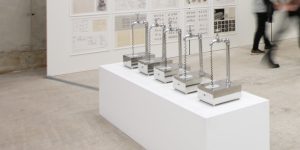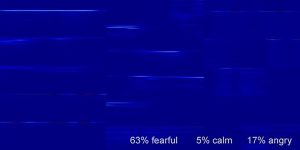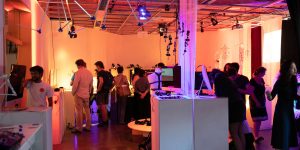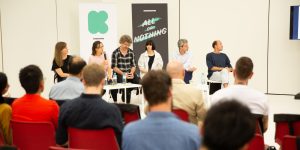interdisciplinary

THE COMPUTATION CENTER [CENTRO DE CÁLCULO] AT MADRID UNIVERSITY. 1966-1973
The Computation Center at Madrid University (CCUM) is an example of how computation centers, mathematicians and some private computer companies became generators of interaction between technology and other disciplines.

Define Sentience
MA Interactive Technologies of Performative and Media Arts, CINETic (The International Center for Research and Education in Innovative Creative Technologies), University of Theatre and Film “I.L. Caragiale,” Bucharest, Romania.
Define Sentience explores the impact of technological advancement on human emotions and social interactions. The project is the result of research conducted at the International Center for Research and Education in Innovative Creative Technologies (CINETic) in Bucharest. CINETic’s mission is to develop knowledge and to innovate at the international level in the fields of performing arts and film, as well as in the fields that lead to their growth and transformation. The knowledge acquired in theatre and film is expanded through research within interdisciplinary projects that bring together art, science and technology.

Content One Campus – Network Intelligence
Organized by Ministry of Culture, Sports and Tourism of the Republic of Korea (MCST) and Korea Creative Content Agency (KOCCA) (KR)
With its disruptive AI, robot, data, 3D, and VR technologies, the Fourth Industrial Revolution has triggered a fundamental change in the way we live, work and relate to one another. The speed and breadth of the economic, political, social, and cultural changes produced by technology are literally beyond our comprehension. It is time to think, act, and collaborate to bring about new methodologies for the coming age. What, then, will be the best strategic approach? What manners of collaboration are necessary? How can we educate our talented creators?

Gallery Spaces Panel V: Artists & scientists – Exploring new forms of collaboration (Scientist in Residence Program)
Just as artists today are increasingly interested in science and technology, scientists and technologists are turning to the arts as a source of new perspectives and tools for communication. This trend requires new initiatives to establish better links between the worlds of art and science, as well as between cultural and research institutions. Through its Art&D labs, Gluon supports artist residencies in laboratories of companies, research institutes and universities. Through its Scientists in Residence programme, it encourages artists to open their studios to scientists and technologists. On the basis of their experiences in these programmes, the scientists of this panel will reflect on the following questions: To what extent can these interdisciplinary collaborations stimulate innovative ideas and projects of social relevance? What challenges do scientists have to face in working together with artists? And how can organizations help them achieve meaningful exchanges?

Gallery Spaces Panel IV: Interdisciplinary Art – how becoming established?
The art market refers to the process of art distribution and sales. Museums, galleries, collectors, curators, critics are part of the active market participants influencing the dynamics. Artists to choose interdisciplinary approaches are in need of resources, display and active discourse with all industry participants to increase awareness, understanding and appreciation for interdisciplinary work. What is needed of all industry participants to propel interdisciplinary work to a representation established level? Art and science continuously discover common questions and modes of operation, resulting however in fundamental different outcomes. These differences create friction and great space for collaborations between disciplines.


